St. George's Church
Introduction
Text-to-speech Audio
Images
Stained Glass Window Formerly Installed at St. George's
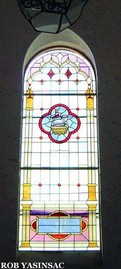
Bell Tower at St. George's Church
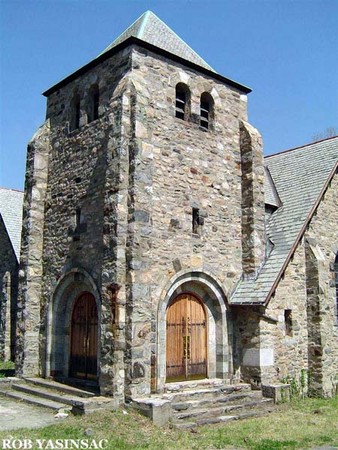
St. George's Church
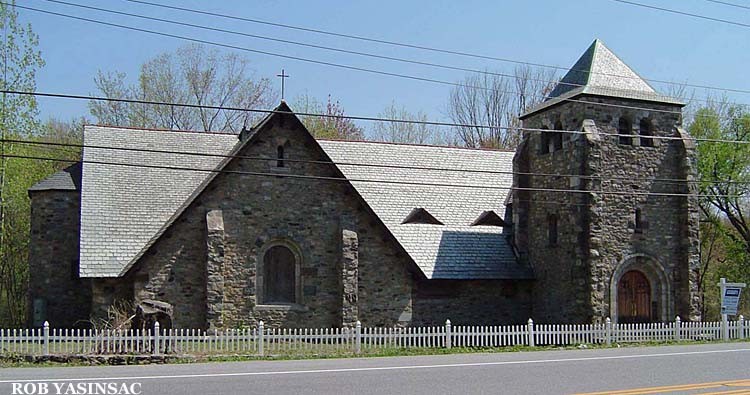
St. George's Church Altar - 1921
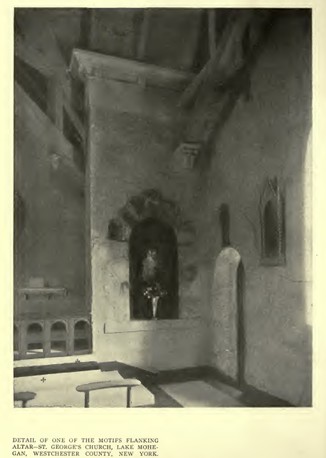
St. George's Church - 1921
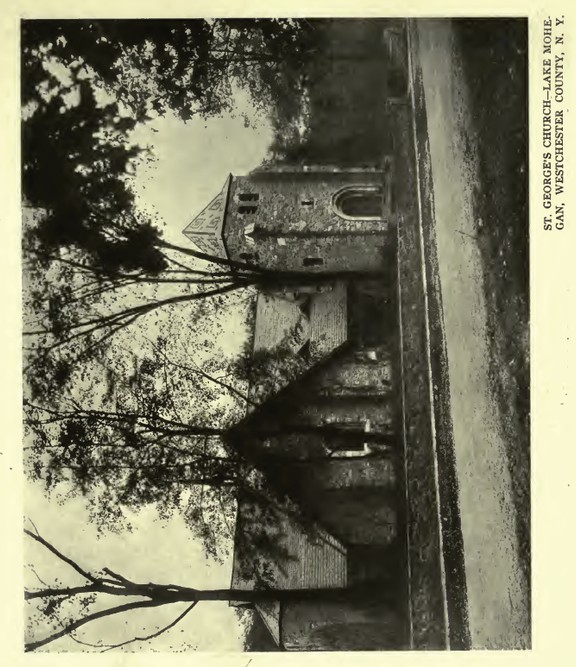
St. George's Church Transept - 1921
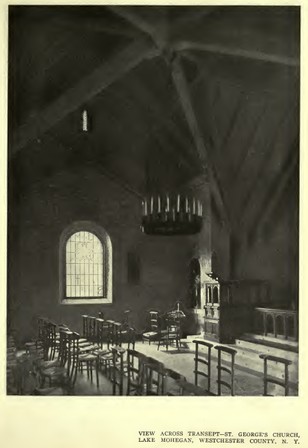
Backstory and Context
Text-to-speech Audio
St. George’s Church was constructed between 1911 and 1912 by New York City based architectural firm Hewitt and Bottomley and paid for by prominent local resident Aimee LaFarge-Heins. Aimee was the brother of noted American artist and author John LaFarge and the wife of George Louis Heins, who operated a New York based architectural firm with LaFarge’s oldest son Christopher. The church was designed to be a memorial to Lafarge and Heins and was dedicated as such by Cardinal John Murphy Farley in May of 1912. Prior to the renovation of St. George’s Church, it housed stained-glass windows attributed to artist, John LaFarge, which are now installed at Elizabeth Ann Seton Church in Shrub Oak, NY. The pews that were imported from France.
In 1891, George Louis Heins and Christopher Grant LaFarge won a three-year long design competition for the designing of The Cathedral Church of Saint John the Divine, the largest Catholic cathedral in the world. Oral tradition suggests that Hewitt and Bottomley used the architectural style of Heins and LaFarge as inspiration for their design. St. George's Church was therefore built in the Romanesque Revival style popular with ecclesiastical architecture between the mid-19th and early 20th centuries, using undressed rock to form the bulk of the walls of the church’s asymmetrical cross footprint and an oversized bell tower.
John LaFarge, Aimee’s brother, is held as one of the most recognizable artists from the American Renaissance period. He was known for many different areas of artistic design, most notably painting and stained glass. Examples of his work can be seen in the Smithsonian Museum of Art’s collections, the Biltmore Estate in Asheville, NC, and the interior of the Trinity Church in Boston, MA, which is almost completely covered with LaFarge’s murals and stained glass. Records show that LaFarge submitted a patent for his stained-glass technique just before Louis Comfort Tiffany submitted a similar one. In his lifetime he was elected in the National Academy of Design, chosen for membership in the American Academy of Arts and Letters, and was awarded the Cross of the Legion of Honor from the French Government.
The Architects of St. George’s Church, Edward Shepard Hewitt and William Lawrence Bottomley were also well-known in their time. Hewitt distinguished himself as a painter and served on the educational committee for the Beaux Arts Institute of Design in New York in the 1920s. Bottomley, an accomplished artist and architect in his own right, was also previously the mayor of Old Brookville on Long Island in 1930. Among their other architectural accomplishments are the high schools in Port Chester and Southampton, NY, and the Phillips Fountain in Battery Park, erected as a memorial to Jack Phillips who manned his post as the wireless operator on board the Titanic when the ship sank in the North Atlantic in 1912.
At the time of its construction, St. George’s Church was one of three Catholic mission churches in the area of northern Westchester and lower Putnam Counties. The other two being St. Peter’s Church, now St. Patrick’s, in Yorktown, and St. Paul’s Chapel in Oscawana Lake.
Sources
Colton, Arthur Willis. 1921. “The Work of William Lawrence Bottomley. Part I.” The Architectural Record, 278, L (5): 339–58.
Colton, Arthur Willis. 1921. “The Work of William Lawrence Bottomley. Part II.” The Architectural Record, 279, L (6): 418–44.
Gordon, Judith E. 2001. “The History Behind Two Historic Structures in Yorktown.” North County News, December.
“John La Farge.” 2020. Accessed August 29. https://americanart.si.edu/artist/john-la-farge-2760.
Sloan, Julie L. 2020. “The Rivalry Between Louis Comfort Tiffany and John La Farge.” Julie L Sloan.
Julie L Sloan, LLC. Accessed August 29. https://www.jlsloan.com/louis-comfort-tiffany-and-john-la-farge.
Weinberg, Helene Barbara. 1974. “John La Farge and the Decoration of Trinity Church, Boston.” Journal of the Society of Architectural Historians 33 (4): 323–53. doi:10.2307/988938.
Rob Yasinsac - hudsonvalleyruins.org
Rob Yasinsac - hudsonvalleyruins.org
Rob Yasinsac - hudsonvalleyruins.org
The Architectural Record, Volume L, Issue 5, Page 352
The Architectural Record, Volume L, Issue 5, Page 351
The Architectural Record, Volume L, Issue 5, Page 353
